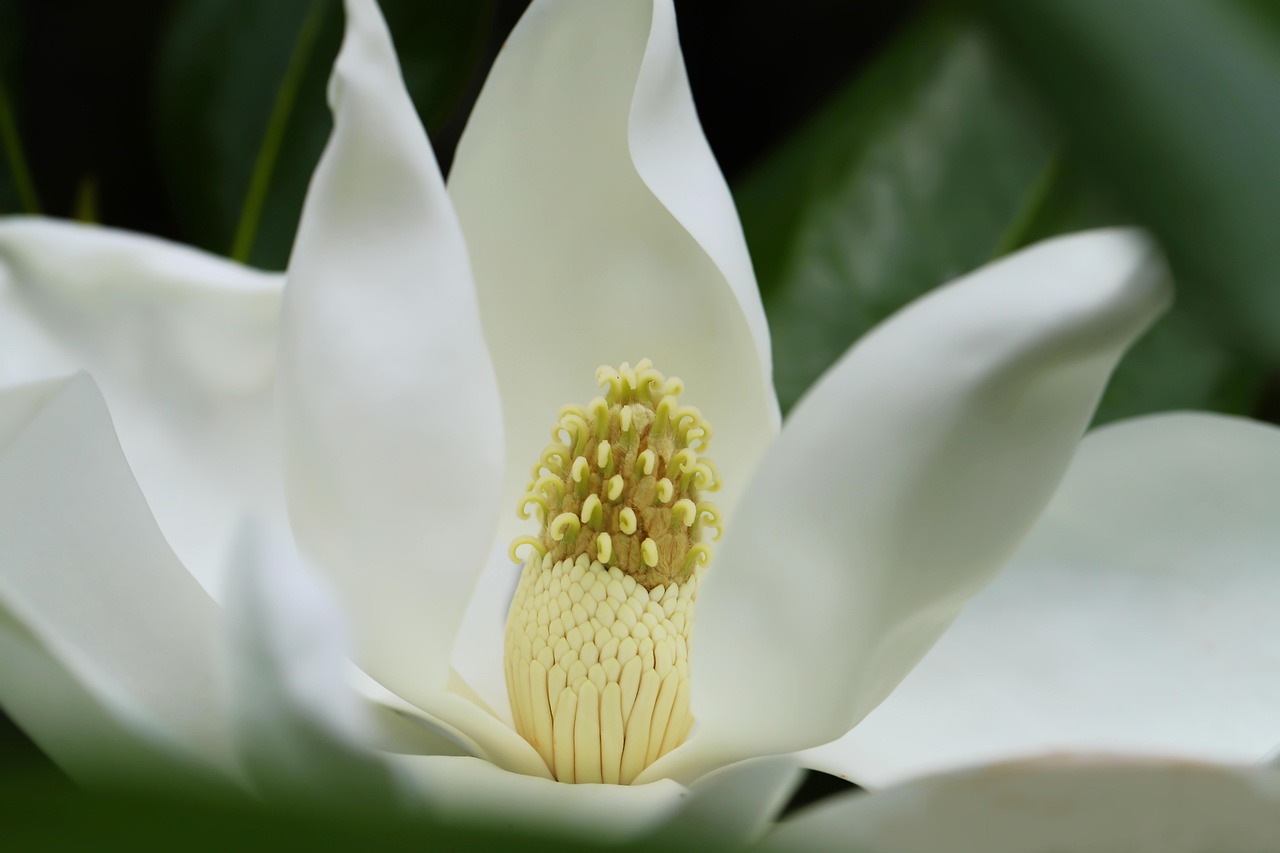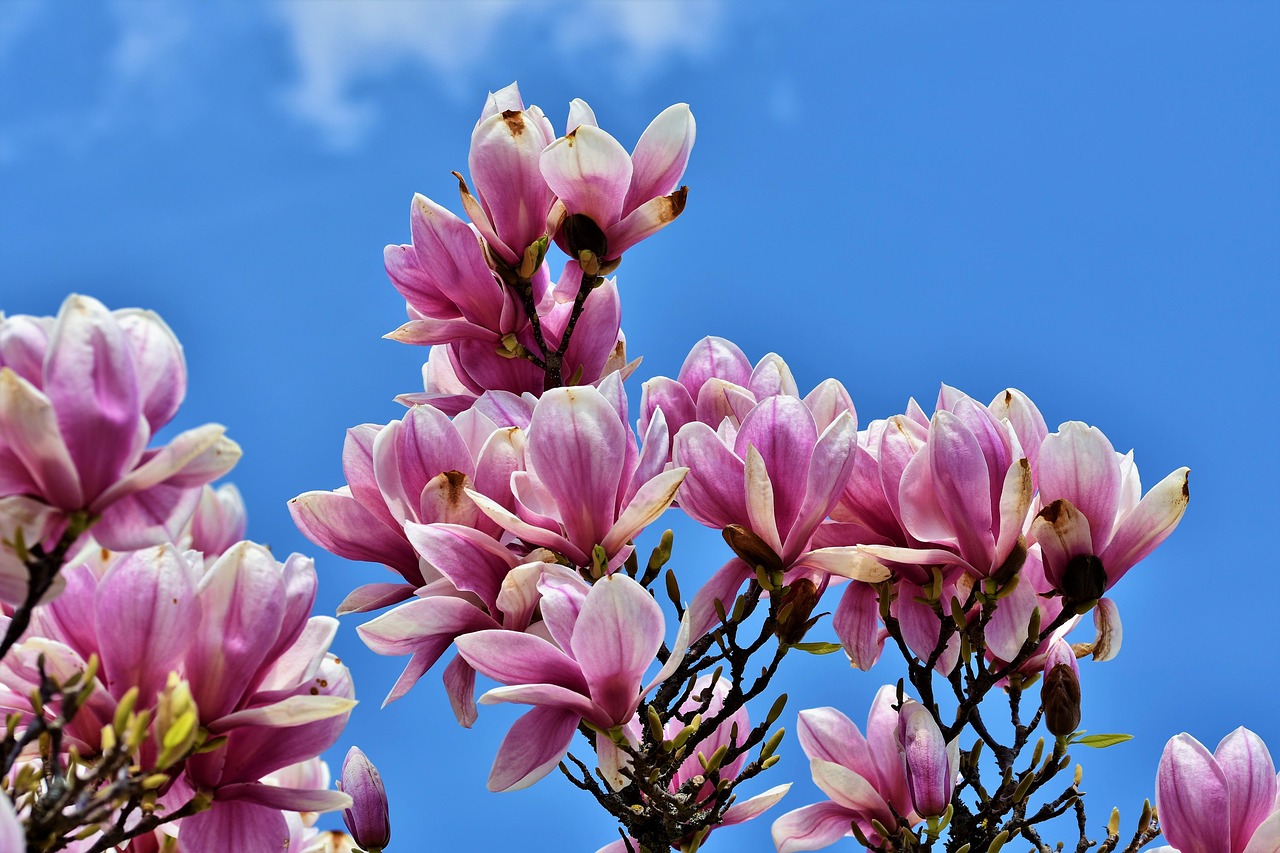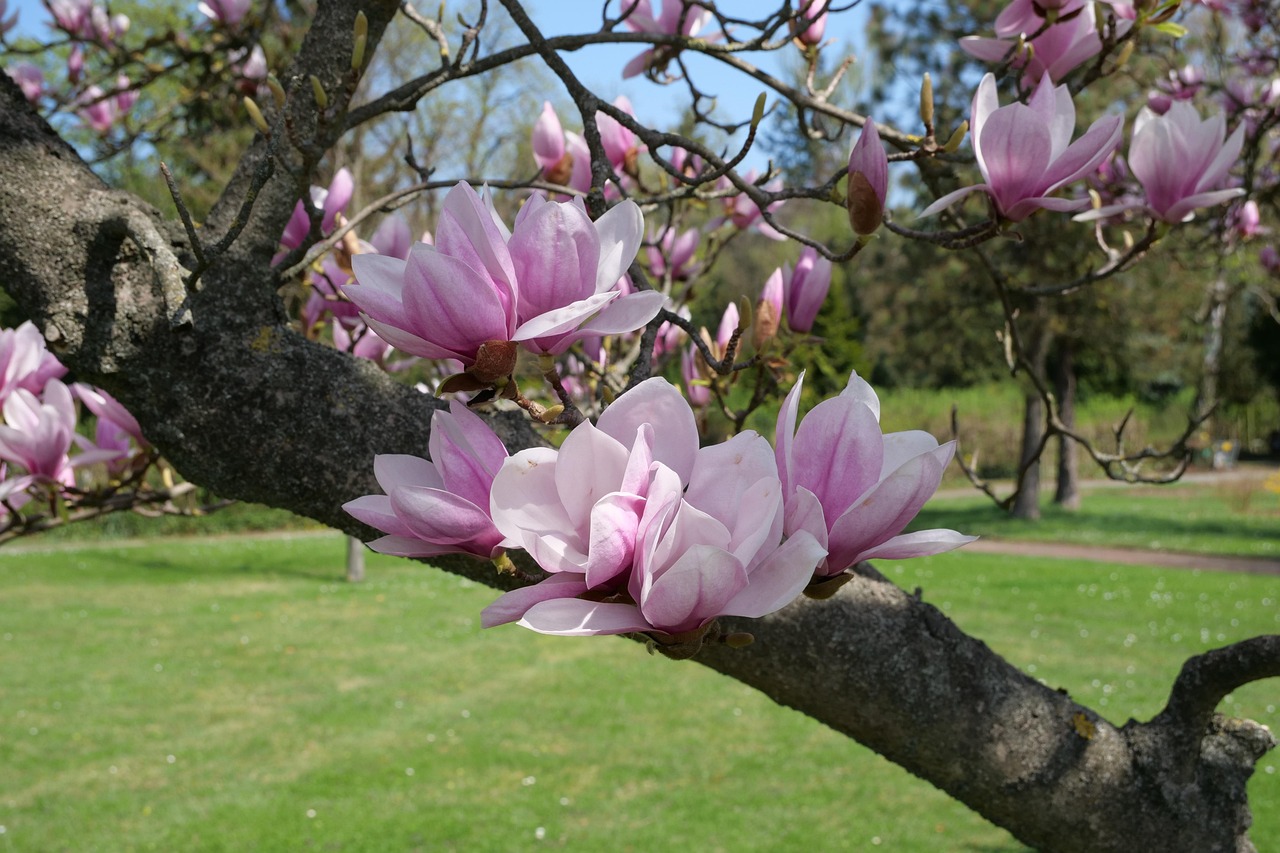Magnolia trees are not universally evergreen. Some species are deciduous, shedding their leaves in the fall, while others, such as the Southern Magnolia, retain their foliage year-round. Understanding the differences among various magnolia species is essential for selecting the right variety for your landscape.
Understanding Magnolia Trees

Magnolia trees belong to the Magnoliaceae family and are known for their stunning flowers and lush foliage. They thrive in various environments, making them a popular choice for gardens and parks. These trees are primarily native to Asia and the Americas, with many species offering unique characteristics.
When considering whether a magnolia tree is evergreen or not, it is important to recognize that there are over 200 species of magnolias. Their growth habits can vary widely. Some magnolias retain their leaves throughout the year, while others lose them in winter. Generally, the evergreen varieties are more common in warmer climates, whereas deciduous types are often found in temperate regions.
Types of Magnolia Trees
Magnolia trees can be categorized into two main types: evergreen and deciduous. Each type has its own unique features, growth patterns, and suitability for different climates.
Evergreen Magnolias
Evergreen magnolias maintain their leaves throughout the year. This makes them an attractive option for providing greenery even in winter months. One of the most well-known evergreen species is the Southern Magnolia (Magnolia grandiflora), which is renowned for its large, fragrant white flowers and glossy green leaves.
Some characteristics of evergreen magnolias include:
- Year-round foliage provides continuous visual appeal.
- Typically grows larger than deciduous varieties.
- Produces large, fragrant flowers in late spring or summer.
Deciduous Magnolias
Deciduous magnolias lose their leaves in the fall, making them less effective for year-round greenery. However, they compensate for this with spectacular spring blooms. Common deciduous species include the Star Magnolia (Magnolia stellata) and the Saucer Magnolia (Magnolia × soulangeana).
Deciduous magnolias have their own set of features:
- Stunning spring flowers that attract pollinators.
- Leaves turn vibrant colors before falling in autumn.
- Generally smaller in stature compared to evergreen types.
Popular Magnolia Species
Below is a table highlighting some popular species of magnolia trees, along with their characteristics:
| Species | Type | Height | Flower Color |
|---|---|---|---|
| Southern Magnolia | Evergreen | 60-80 ft | White |
| Star Magnolia | Deciduous | 15-20 ft | White/Pink |
| Saucer Magnolia | Deciduous | 20-30 ft | Pink/White |
The diverse range of magnolia species allows gardeners and landscapers to choose trees that fit their aesthetic and environmental needs. Understanding whether a magnolia tree is evergreen or deciduous is crucial when planning for year-round greenery in your garden.
In addition to their beauty, magnolias also have cultural significance in various regions. They symbolize dignity and nobility in many cultures, adding an extra layer of meaning to these stunning trees. As you explore your options, consider how these trees can enhance your outdoor space while providing visual interest throughout the seasons.
Caring for Magnolia Trees
Caring for magnolia trees is essential to ensure their health and longevity. Proper care varies depending on whether the species is evergreen or deciduous, but some general guidelines apply to all magnolias. Understanding these care requirements can help you maintain vibrant and beautiful trees in your landscape.
Soil Requirements
Magnolia trees thrive in well-drained, fertile soil. They prefer slightly acidic to neutral pH levels. Here are some tips for preparing the right soil:
- Soil Testing: Conduct a soil test to determine pH and nutrient levels.
- Organic Matter: Incorporate organic compost to improve soil structure and fertility.
- Drainage: Ensure good drainage by avoiding compacted soils and standing water.
Watering Needs
Watering plays a crucial role in the establishment and growth of magnolia trees. Newly planted magnolias require regular watering to help them establish strong root systems. Here are some important considerations:
- Frequency: Water deeply once a week during dry spells, especially in the first couple of years after planting.
- Mulching: Apply organic mulch around the base to retain moisture and regulate soil temperature.
- Signs of Stress: Watch for wilting or yellowing leaves, indicating insufficient water.
Fertilization
Fertilizing magnolia trees can promote healthy growth and flowering. However, over-fertilization can lead to root burn and excessive leaf growth at the expense of flowers. Follow these guidelines for fertilization:
- Timing: Fertilize in early spring before new growth starts.
- Type of Fertilizer: Use a balanced fertilizer with an N-P-K ratio of 10-10-10 or similar.
- Application: Apply according to package instructions, focusing on the root zone.
Pest and Disease Management
Like all plants, magnolia trees can be susceptible to pests and diseases. Being proactive in managing these issues is essential for maintaining healthy trees. Below are some common pests and diseases affecting magnolias:
Pests
- Magnolia Scale: These insects attach themselves to branches and sap, leading to stress. Use horticultural oils or insecticidal soap for control.
- Aphids: These small insects can cause leaf curling and stunted growth. Natural predators like ladybugs can help keep their population in check.
- Spider Mites: Look for fine webbing on leaves. Increase humidity around the tree or use insecticidal soap to manage infestations.
Diseases
- Crown Gall: A bacterial disease that causes galls on roots and stems. Avoid planting in infected areas and ensure good soil drainage.
- Powdery Mildew: A fungal disease that appears as white powder on leaves. Improve air circulation and apply fungicides if necessary.
- Leaf Spot: Various fungi can cause spots on leaves. Remove affected leaves and apply fungicides when needed.
Pruning Magnolia Trees
Pruning is an important aspect of caring for magnolia trees, especially for deciduous varieties that bloom on old wood. Here are some key points regarding pruning:
When to Prune
- Timing: Prune during late winter or early spring before new growth begins.
- Avoid Late Pruning: Pruning too late can remove flower buds and reduce blooms for the season.
How to Prune
- Remove Dead or Diseased Wood: Cut away any branches that show signs of disease or damage.
- Shape the Tree: Maintain an open center to improve light penetration and air circulation.
- Avoid Over-Pruning: Limit pruning to 20% of the tree’s total canopy in one season to prevent stress.
Selecting the Right Location
<
p>The location where you plant your magnolia tree significantly affects its growth and health. Consider the following factors when selecting a site:
- Sunlight: Most magnolias thrive in full sun, requiring at least six hours of direct sunlight daily.
- Space: Ensure there is enough space for the tree to grow to its mature height and width without obstruction.
- Protection from Wind: Choose a sheltered location to protect young trees from strong winds that can damage branches.
Caring for magnolia trees involves understanding their unique requirements and addressing them appropriately. By providing proper soil, water, and maintenance, you can enjoy these magnificent trees in your landscape for many years to come.
<
h2>Magnolia Tree Varieties and Their Climate Adaptability
When selecting a magnolia tree for your garden, understanding the climate adaptability of different varieties is essential. Some magnolias thrive in warmer regions, while others can withstand cooler temperatures. This section explores various magnolia species and their suitability for different climates.
Southern Magnolia (Magnolia grandiflora)
The Southern Magnolia is one of the most popular evergreen varieties. It is well-known for its large, fragrant white flowers and glossy leaves. This tree is native to the southeastern United States and is particularly suited for warmer climates.
- Climate: Thrives in USDA hardiness zones 7 to 10.
- Growth Rate: Moderate to fast growth, reaching heights of 60 to 80 feet.
- Soil Preference: Prefers slightly acidic, well-drained soil.
Cucumber Tree (Magnolia acuminata)
The Cucumber Tree is a deciduous variety, known for its unique, cucumber-like fruit and large, yellow-green flowers. It is adaptable to a range of climates and is often found in eastern North America.
- Climate: Thrives in USDA hardiness zones 4 to 8.
- Growth Rate: Moderate growth rate, typically reaching heights of 50 to 70 feet.
- Soil Preference: Prefers well-drained soil with a slightly acidic pH.
Star Magnolia (Magnolia stellata)
The Star Magnolia is a smaller deciduous tree that produces stunning star-shaped flowers in early spring. Its compact size makes it ideal for smaller gardens or urban settings.
- Climate: Thrives in USDA hardiness zones 4 to 8.
- Growth Rate: Slow to moderate growth, generally reaching heights of 15 to 20 feet.
- Soil Preference: Prefers well-drained, fertile soil.
Saucer Magnolia (Magnolia × soulangeana)
The Saucer Magnolia is a hybrid that combines traits from several magnolia species. It is popular for its beautiful, large flowers that bloom in shades of pink and white.
- Climate: Thrives in USDA hardiness zones 5 to 9.
- Growth Rate: Moderate growth rate, typically reaching heights of 20 to 30 feet.
- Soil Preference: Grows best in well-drained, slightly acidic soil.
Common Uses for Magnolia Trees
Magnolia trees are not only valued for their beauty but also serve various practical purposes in landscaping and gardening. Their versatility makes them an excellent choice for numerous applications.
Lawn and Garden Aesthetics
Magnolias are often used as focal points in landscapes due to their stunning blooms and attractive foliage. Here are some ways they can enhance your garden:
- Specimen Trees: Planting a single magnolia can create a striking centerpiece in your yard.
- Flowering Borders: Use magnolias as part of a flowering border to add seasonal interest and color.
- Shade Trees: Larger varieties provide ample shade during the warmer months, making outdoor spaces more comfortable.
Wildlife Attraction
Magnolia trees play a role in supporting local ecosystems. Their flowers attract various pollinators, including bees and butterflies. Additionally, their leaves provide shelter for birds and small mammals. Consider these benefits:
- Pollinator Friendly: Magnolias are particularly appealing to bees during their blooming period.
- Shelter: The dense foliage offers protection for nesting birds and small wildlife.
- Food Source: Some species produce seeds that serve as food for birds and squirrels.
Cultural Significance of Magnolia Trees
Beyond their aesthetic appeal, magnolia trees hold cultural significance in various regions around the world. Their symbolism often reflects beauty, dignity, and perseverance.
Symbolism in Different Cultures
The magnolia has rich meanings across different cultures:
- In the United States: Magnolias symbolize dignity and nobility. They are often associated with Southern culture and grace.
- In Asian Cultures: Magnolias represent purity and gentleness. They are commonly featured in art and literature as symbols of beauty.
- Nuptial Symbolism: In weddings, magnolias are used to symbolize love and purity, making them popular choices for bouquets and decorations.
Culinary Uses
Certain magnolia species have culinary applications. For example, the flowers of the Southern Magnolia can be used to make tea, while the seeds of the Cucumber Tree can be consumed when prepared correctly. However, always ensure proper identification and preparation before consuming any plant materials.
The diversity of magnolia trees extends beyond their visual appeal; they also enrich our landscapes, support wildlife, and carry deep cultural meanings. As you explore these magnificent trees, consider how they can enhance not just your garden but also your connection to nature and community.
Environmental Benefits of Magnolia Trees

>Magnolia trees contribute significantly to the environment, making them a valuable addition to any landscape. Their various ecological benefits play a crucial role in maintaining a healthy ecosystem. Here are some of the key environmental advantages:
Air Quality Improvement
Magnolias help improve air quality by absorbing carbon dioxide and releasing oxygen through photosynthesis. This process is vital for creating a healthier atmosphere. Additionally, their large leaves can trap dust, pollen, and pollutants, further purifying the air.
Soil Erosion Control
The root systems of magnolia trees help stabilize the soil, preventing erosion. Their extensive roots anchor the soil, reducing runoff and maintaining soil integrity. This is particularly beneficial in areas prone to heavy rains or on slopes where erosion is a concern.
Water Management
Magnolias can also play a role in managing water resources. Their ability to absorb water helps regulate groundwater levels and reduce flooding. By planting magnolias in your landscape, you can contribute to better water management practices in your area.
Magnolia Trees in Landscaping
Incorporating magnolia trees into your landscaping can enhance both the aesthetic and functional aspects of your outdoor space. Here are some creative ways to use these beautiful trees in your landscape design:
Accent Planting
Magnolias make excellent accent plants due to their striking appearance. Plant them near entryways, patios, or as focal points in garden beds to draw attention and create visual interest.
Screening and Privacy
Evergreen magnolias can serve as natural privacy screens. Their dense foliage provides excellent coverage, making them suitable for creating secluded areas in your yard or blocking unsightly views.
Native Plant Gardens
Integrating magnolia trees into native plant gardens can support local wildlife and promote biodiversity. Pair them with other native plants to create a harmonious ecosystem that attracts pollinators and other beneficial creatures.
Challenges in Growing Magnolia Trees
While magnolia trees offer many benefits, they also come with certain challenges that potential growers should consider:
Pest Issues
As mentioned previously, magnolias can be susceptible to pests such as magnolia scale and aphids. Regular monitoring and appropriate pest management strategies are essential to keep these issues under control.
Disease Susceptibility
Magnolia trees can be affected by diseases like crown gall and powdery mildew. Understanding the signs of these diseases and how to treat them is crucial for maintaining tree health.
Site Selection
Choosing the right location for planting magnolia trees is critical. They require adequate sunlight and space for growth. Poor site selection can lead to stunted growth or increased susceptibility to pests and diseases.
Final Thoughts
Magnolia trees are beautiful additions to any landscape, providing year-round greenery and stunning blooms. Understanding the differences between evergreen and deciduous varieties allows gardeners to select the best options suited to their climate and aesthetic preferences. With proper care, magnolias not only enhance the beauty of gardens but also contribute positively to the environment by improving air quality, controlling erosion, and supporting local wildlife.
The cultural significance of magnolias adds depth to their appeal, symbolizing beauty and resilience across various cultures. Whether you are looking for a striking specimen tree, a privacy screen, or a way to attract pollinators, magnolia trees offer versatile solutions for enhancing outdoor spaces.
In conclusion, embracing magnolia trees in your landscape design can create a vibrant and sustainable environment that benefits both you and nature. As you consider adding these magnificent trees to your garden, remember that their beauty extends far beyond their flowers; they embody the connection between nature and humanity, enriching our lives in numerous ways.
